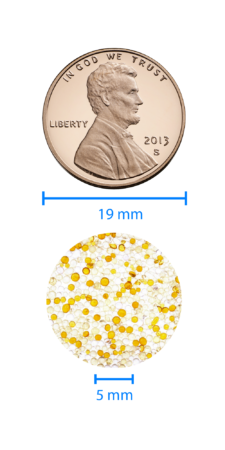Let’s face it: we humans are not very good at managing waste. Plastic exemplifies the problem. According to National Geographic, only 9% of plastic products actually get recycled, meaning the vast majority (91%) of plastic produced just gets dumped into the environment. Most of it is destined for landfills, but the rest is littered. It’s hard to estimate how much plastic is carelessly tossed away, as much of it stays on the land where it will sit for hundreds of years before decomposing, but 8 million tons (or about 3%) of our annual plastic production ends up in the ocean, year after year.
The most famous repository of oceanic plastic waste is the Great Pacific Garbage Patch, now larger than the state of Texas. At its last measurement in 2018, it exceeded expectations, weighing in at an estimated 80,000 tons. The Great Pacific Garbage Patch represents just 1% of all plastic dumped into the ocean… annually.
Every year, we produce more plastic than the year before. At least 50% of it goes into single-use products: packaging, straws, to-go bags, etc. Did you get that? Half of all plastic produced is used only once, momentarily, but sticks around for hundreds of years.
We know from viral photos (like this turtle, these albatrosses, and this whale) what plastic pollution does to animals.
But what does it do to us?


Plastic breaks down faster in the ocean. It doesn’t biodegrade but instead breaks apart into increasingly smaller pieces called microplastics. These are measured not in millimeters but nanometers. They are so small that they can actually enter the bloodstream of organisms that ingest them.
The average person is almost guaranteed to have plastic particles in their body. Microplastics are found not only in oceans but also freshwater lakes, inland seas, rivers, and wetlands. So almost all the seafood in our diet eats plastic. Additionally, research shows that microplastics can leach into food or drink packaged in plastic (like water bottles)! We don’t yet know how these plastic particles affect human biology.
The sheer scale of plastic pollution is mind-numbing. But, you know what? So is climate change, and we don’t view the immensity of that problem as an excuse not to act. We view it not only as an opportunity, but as something that in fact obligates us to act.
In the same vein, there are countless companies that offer plastic-free solutions to your daily waste-producing activities.
It starts with us.




